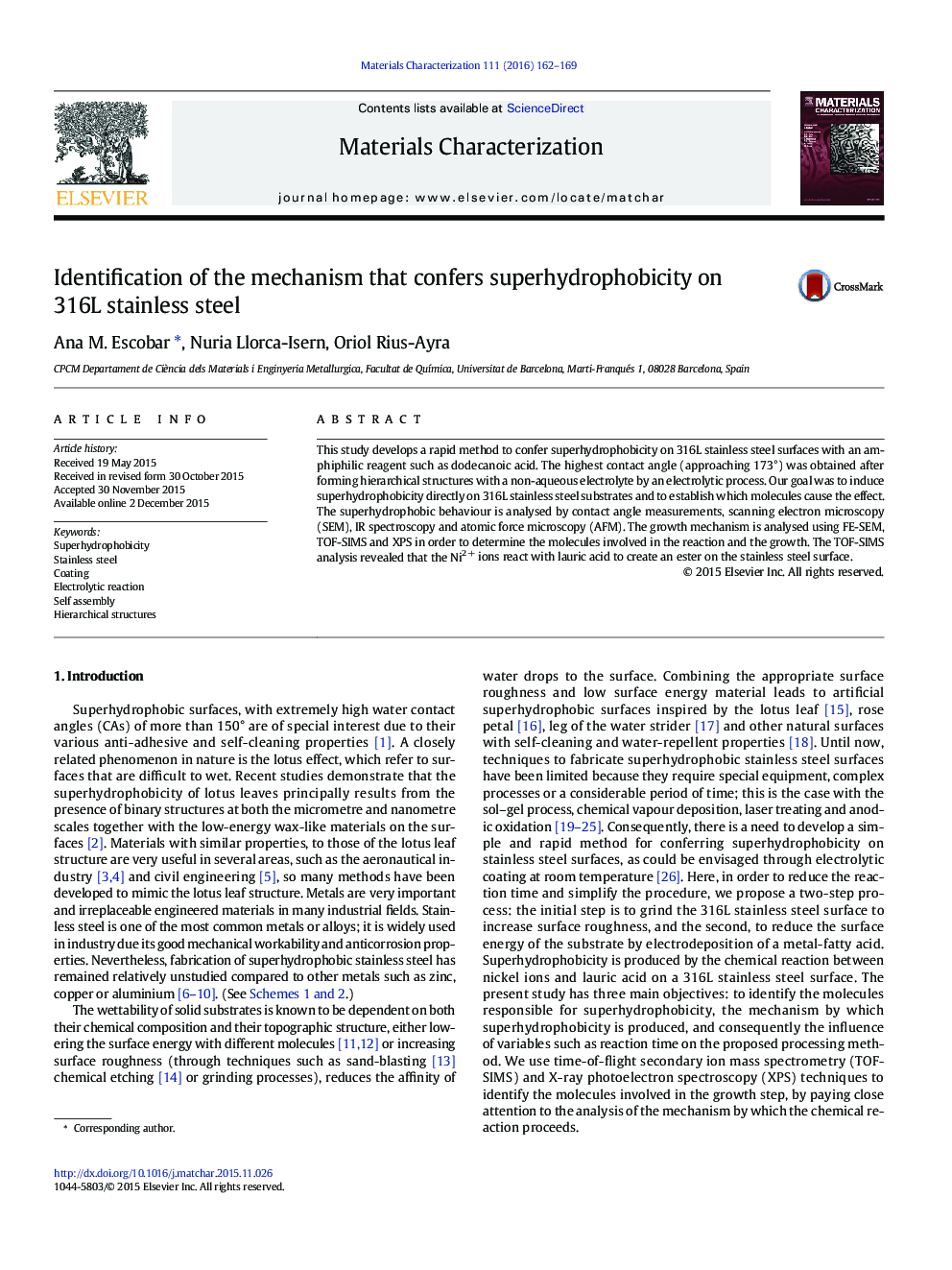| Article ID | Journal | Published Year | Pages | File Type |
|---|---|---|---|---|
| 1570786 | Materials Characterization | 2016 | 8 Pages |
•This study develops a rapid and facile approach to impart superhydrophobicity properties to 316L stainless steel surfaces with an amphiphilic reagent such as dodecanoic acid. Surface character changes from superhydrophilicity to superhydrophobicity.•This process changes the surface character from superhydrophilicity to superhydrophobicity.•The process based on electrolysis of a nickel salt in lauric acid provides superhydrophobic behaviour in 316L stainless steel.•The growth mechanism is proposed as a mode island (Volmert- Weber mode).•TOF-SIMS and XPS provided the identification of the molecules involved in the surface modification reaction on AISI 316L inducing superhydrophobicity.
This study develops a rapid method to confer superhydrophobicity on 316L stainless steel surfaces with an amphiphilic reagent such as dodecanoic acid. The highest contact angle (approaching 173°) was obtained after forming hierarchical structures with a non-aqueous electrolyte by an electrolytic process. Our goal was to induce superhydrophobicity directly on 316L stainless steel substrates and to establish which molecules cause the effect. The superhydrophobic behaviour is analysed by contact angle measurements, scanning electron microscopy (SEM), IR spectroscopy and atomic force microscopy (AFM). The growth mechanism is analysed using FE-SEM, TOF-SIMS and XPS in order to determine the molecules involved in the reaction and the growth. The TOF-SIMS analysis revealed that the Ni2 + ions react with lauric acid to create an ester on the stainless steel surface.
Graphical abstractFigure optionsDownload full-size imageDownload as PowerPoint slide
